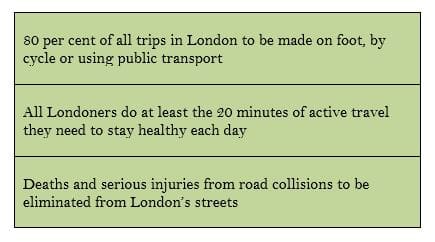Rationale and key Challenges on the Way towards a common SUMI Framework
In this opinion piece Ian Catlow, Head of London’s European Office and Chair of EUROCITIES' working group on sustainable mobility planning, reflects on the rationale and key challenges towards a common Sustainable Urban Mobility (SUMI) framework.
This opinion piece by Ian Catlow, Head of London’s European Office, and Chair of EUROCITIES’ working group on sustainable mobility planning, originally appeared in the European Transport Regulation Observer ‘Towards a Common European Framework on Sustainable Urban Mobility Indicators’ (November 2020)
Many of us involved in public services rightly spend time trying to measure the outcomes and the effectiveness of policy interventions. This is as true in the domain of sustainable mobility as it is in any other field of public policy and such assessments help to support sound management and proper accountability. For cities it is very useful, where possible, to be able to compare and contrast the performance of our own urban mobility network against peers from around the world.
In London, the integrated transport authority responsible for delivering the Mayor’s Transport Strategy (MTS), Transport for London, draws on input and experience from many sources, including stakeholders, researchers and other cities, when setting objectives in the MTS and measuring progress against them. Our monitoring is published regularly in the Travel in London reports which, as well as focussing on specific MTS goals, also provide a broad picture of travel demand and modal split; road safety; active travel (principally walking and cycling) and air quality; the performance of public transport services; and how transport supports London’s economic development. Importantly it contains interpretative analysis alongside data and performance indicators to help identify areas where intervention should be targeted to ensure progress towards policy goals.
Mayor of London’s Transport Strategy: selected key policy objectives for 2041

London also actively participates in discussion of international best practice by being a member of city and transport networks such as EUROCITIES, POLIS and the International Association of Public Transport (UITP), and will continue to do so. Cities strongly support efforts to improve the quantity and quality of evidence on the impact of urban mobility policy and through these networks have contributed to the work done by the European Commission’s DG MOVE to prepare sustainable urban mobility indicators. The Commission’s approach to establishing indicators and the specific ones selected could play a valuable role in supporting the interpretation and monitoring of Sustainable Urban Mobility Plans and in identifying areas where further initiatives, whether at local, national or EU level, might be needed.
It is important to remember that indicators are just that – an indication of the situation at any one moment. They are less reliable as an absolute measure of performance or in making direct comparisons between different cities and regions. This is because cities have different starting points and data is collected in different ways at different times and for different purposes. Sometimes relevant data is not available, or it is not up to date, it covers different geographical areas or is defined in subtly different ways: for example, accurate measurement of air quality is affected by the positioning of sensors, and the way that road traffic fatalities and serious injuries are defined differs internationally.
But if indicators are used regularly over time and in a consistent way, they can be an extremely important tool in the assessment of whether policy interventions are having the desired effect.
Harmonisation of data collection methods could help address these weaknesses and we have seen convergence of methods over recent years, but there is also an issue of resources at local level. There has been increasing pressure on the finances of sub-national public authorities since the financial crash of 2008 and now the COVID crisis and the collapse of revenue from public transport fares means that cities and urban transport authorities have little capacity to establish and maintain new data collection systems. Financial support from the EU and national governments and further research into new and more efficient methods of sourcing data would be welcome.
It is also important not to forget more subjective indicators, such as whether people feel safe on public transport or in the street environment or when cycling. In London, the MTS is underpinned by the principles of “Healthy Streets” and the key indicators of this are shown below.

A number of these rely at least in part on individual perception. This is critical given that achieving modal shift and many other sustainable mobility objectives requires people to change their behaviour and that in turn depends on the way they perceive the urban mobility environment. The monitoring in the Travel in London report reflects the results of a number of different methods of data collection, including the London Travel Demand Survey (LTDS), a continuous survey of London households that has been running since 2005/06; the “Care” online survey, which asks a sample of Londoners every quarter about their opinions of Transport for London itself; and the Healthy Streets Mystery Shopper Survey, where a dedicated surveyor assesses use and behaviour in 100-metre stretch of street against a number of metrics relating to the Healthy Streets Indicators.
While cities around Europe will always need the power to make decisions which suit local circumstances, they firmly believe in exchanging best practice and fully support efforts to facilitate international comparisons to help improve sustainable urban mobility.







